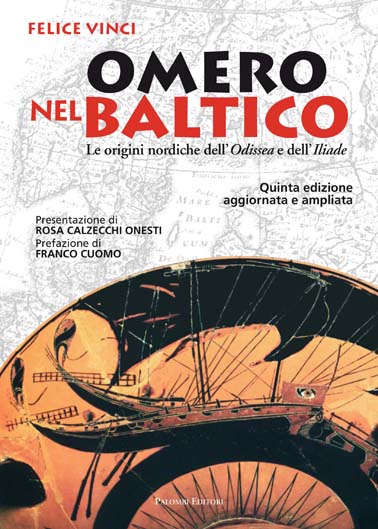This is a timely book written by a macroeconomic expert with a broad theoretical and institutional knowledge of the region under consideration. The pivot question to be answered in this book concerns how small northern European countries came through the economic crisis, and what prospects they may experience should a new crisis hit them. From the very beginning, it becomes clear that a ‘small economy’ is not necessarily a well-defined analytical concept. In economic terms the so-called Continental Nordic countries are large compared to the three Baltic States and Iceland, approximately in the proportion 10:1, although in size of population the disproportion (except for Iceland) is somewhat smaller.
The author quite quickly reduces his analysis to focus on how the ‘small’ small economies managed the crisis. He is undertaking a rather broad-ranging scrutiny of the economic development of the Baltic States compared to Iceland and, to a much lesser extent, the bigger Nordic economies as well as transitory economies in central Europe (Poland, Slovakia and Czech Republic). He wants to figure out why the Baltic States had the worst macroeconomic record of all these countries with regard to getting through the aftermath of the financial collapse of 2008/09. These three countries had the steepest fall in GDP, the highest rise in unemployment, the highest rate of inequality and, without any comparison, experienced a large emigration rate (close to 10 percent of population) of mainly young people.
Chapter by chapter the author goes through the likely economic explanations of this poor performance. One overall conclusion is the lack of economic and political autonomy and the very Anglo-Saxon inspired welfare regimes of all three Baltic states, which is a striking difference when comparison to the economic development in Iceland is analyzed.
The relatively weak automatic budget-stabilizers made GDP and employment plunge dramatically, causing a kind of exodus of mainly young (educated) people to leave these countries. Furthermore, the political elite felt themselves very committed to make the countries become a full member of the euro-zone as soon as possible. This political ambition made a fixed exchange rate policy an indisputable request from the EU. Hereby, a re-start of an economic up-swing by a strategic devaluation of the currency was blocked, even though the IMF recommended, at least in the Latvian case, such a policy.
The author is also pointing at the dominant position of foreign, especially Swedish, banks. In practice, the Baltics had no financial autonomy. The private sector had to borrow at subsidiaries of foreign banks. Credit policy was decided in Stockholm rather than in Tallinn, Riga and Vilnius. All three countries ran heavy balance-of-payments deficits in the boom leading up to 2008 – foreign loans were seemingly without limit. When the credit turn-around suddenly came, governments had to ‘do as we say’ (part of the book’s subtitle), meaning that the foreign banks had a large word to say in economic policy (i.e. fixed exchange rate and austerity) and requested a (partial) bail-out of some insolvent banks – causing public debt to rise. The parallel to Southern Europe (see Jespersen 2016) is striking, whilst the contrast to Iceland is revealing: dramatic devaluation, limited and socially balanced austerity, and no bailing out of private banks.
The content of this thought-provoking book, I think, can be summarized by a quote (found in the book, p. 14) by Joseph Stiglitz: “This book is about economics and economic ideologies and their interactions with politics: it is a case study of how, even the best intentions, when new institutions and policies are created on the basis of oversimplified views of how economies function, the results can be not only disappointing, but even disastrous” (Stiglitz, 2016, p.7, emphasis added).
The over-arching hypothesis is vindicated: that the Baltic States came through the economic crisis more poorly than neighboring states due to an inadequate economic policy dictated by their political elite and foreign stakeholders (i.e. the EU and the Swedish banks). But, and this is an important “but” which the author stresses several times, their specific history and the present somewhat tense security situation along the Russian border (in relation to a significant Russian-speaking minority in Estonia and Latvia) called for a tight political integration to Western Europe (economics) and the US (defense).
Having emphasized this extraordinary political challenge and the limited sovereignty of the governments, the author is still rather critical when it comes to social policy. It is, according to him, mainly a national prerogative to decide on how the burden of public expenditures and the economic crisis is shared among people. The Baltics are the most unequal societies in the Northern region, and here the governments could take lessons from the more mature Nordic welfare states, where the burden is much more equally shared. The Anglo-Saxon welfare model only works (if at all) in countries with a high degree of fiscal and monetary autonomy, like the US (and perhaps also the UK). It is in this light that the somewhat subtle subtitle of the book, “Do as we say and not as we do”, can be understood. The author is hereby making an accusation against the external advisers (especially representatives from Sweden and Finland) that they recommended/required a fixed exchange rate and austerity policies of the Baltic governments; but when they were in a similar situation, in the early 1990s, these two countries devaluated the currency strongly and kept their welfare system intact. The word of ‘hypocrisy’ is written between the lines, whereas Iceland stands out as a strong counter-example.
The book is to be recommended to anyone who takes a serious interest into the economics of the Baltic States and wants to go beyond prejudice and conventional wisdom.
References
Jespersen, J. (2016). The Euro – Why it failed, London: Pivot-Book, Palgrave/Macmillan.
Stiglitz, J.E. (2016). The Euro – How a Common Currency Threatens the Future of Europe, New York and London: W.W. Norton & Company.
